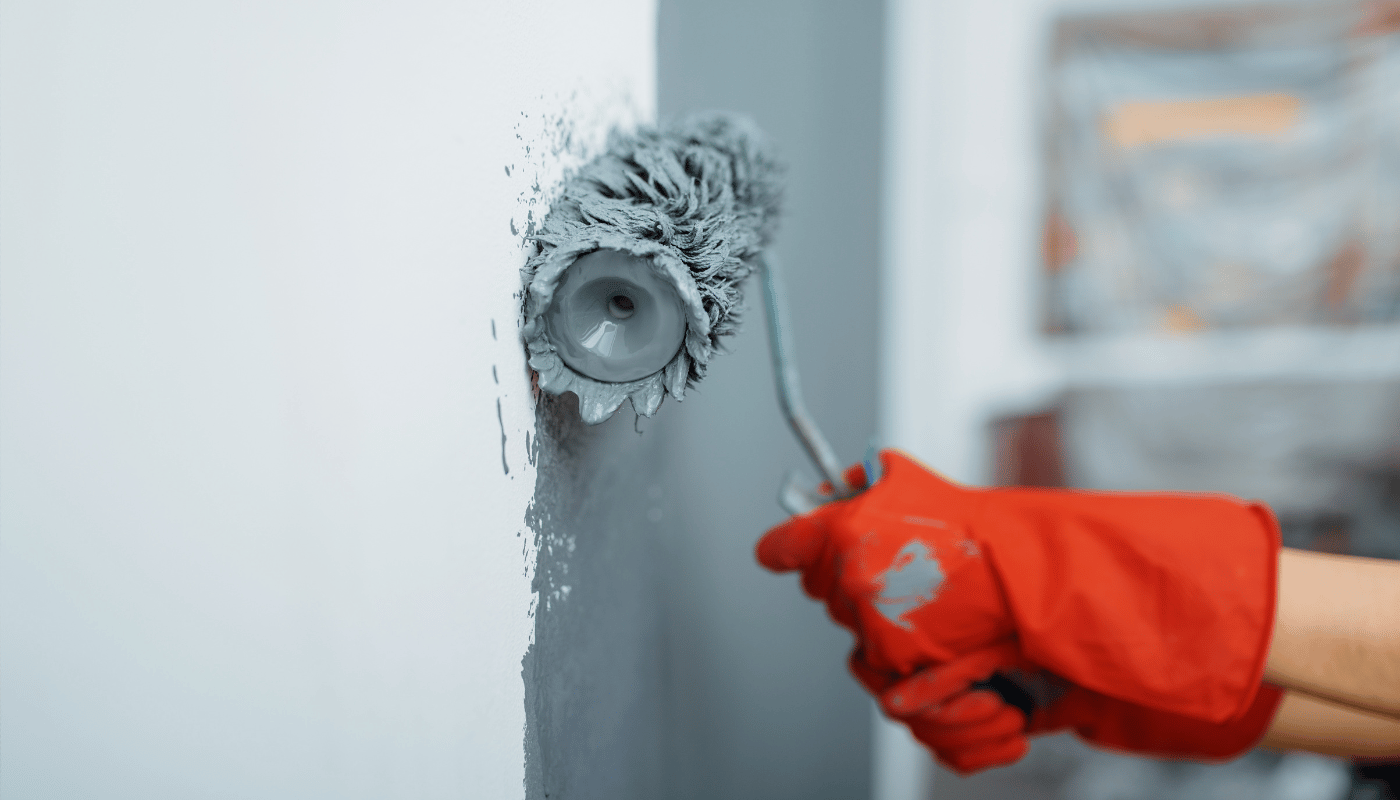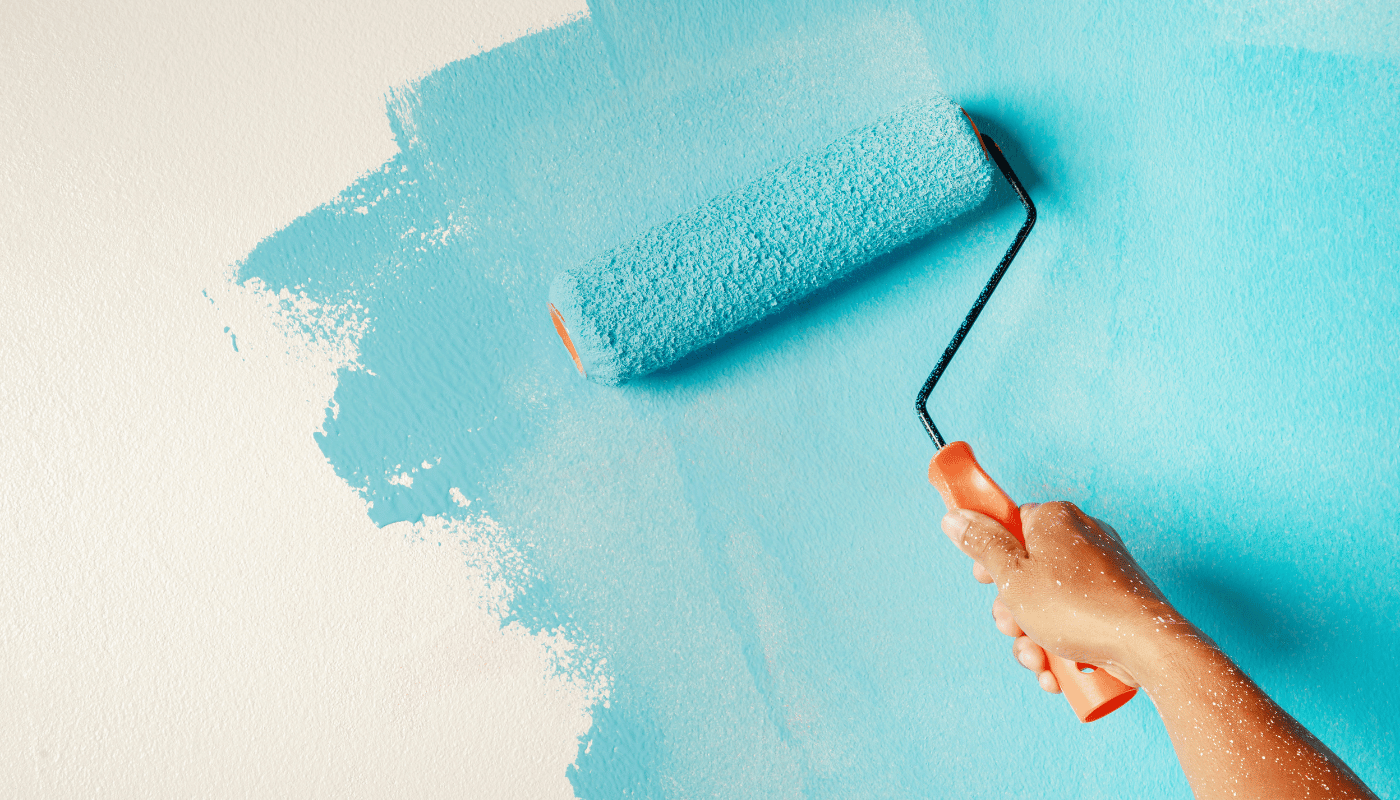Home Painting - Expert roller painting tips and techniques

How to Use a Paint Roller: A Comprehensive Guide
Using a paint roller is one of the most efficient ways to apply paint to large surfaces, making it a favorite tool among professional painters and DIY enthusiasts alike.
Whether you're refreshing a room with a new colour or tackling a large painting project, mastering the paint roller can save you time and help you achieve a smooth, professional-looking finish.
This guide will walk you through the steps and techniques to use a paint roller effectively.
Materials and Tools You'll Need
Before you begin, gather the following materials:
- Paint Roller Frame: The handle that holds the roller cover.
- Roller Cover: The cylindrical part that applies the paint. Choose the nap (thickness) based on your surface.
- Paint Tray: A tray to hold and distribute paint evenly on the roller.
- Extension Pole (optional): For reaching higher areas without a ladder.
- Paint: Your choice of colour and type (water based, oil-based, etc.).
- Painter's Tape: To mask off areas you don't want to paint.
- Drop Cloths or Plastic Sheeting: To protect floors and furniture.
- Stir Sticks: For mixing the paint.
- Protective Gear: Gloves, safety glasses, and old clothing or a painting suit.
Preparation Steps
1. Prepare the Room
- Clear the Space: Remove as much furniture as possible from the room. Cover remaining items and the floor with drop cloths.
- Clean the Walls: Wipe down the walls to remove dust and grime, which can prevent paint from adhering properly.
- Repair Imperfections: Fill in nail holes, cracks, and sand rough areas for a smooth surface.
- Tape Off Edges: Use painter's tape to protect trim, ceilings, and any areas you don't want to paint.
2. Choose the Right Roller Cover
- Nap Thickness:
- Smooth Surfaces: Use a 6mm to 10mm nap for walls and ceilings.
- Semi-Rough Surfaces: Use a 13mm nap for textured walls.
- Rough Surfaces: Use a 20mm to 25mm nap for brick or stucco.
- Material:
- Synthetic Covers: Best for latex paints.
- Natural Fibre Covers: Ideal for oil-based paints.
3. Prepare the Paint
- Stir Thoroughly: Use a stir stick to mix the paint evenly.
- Pour into Tray: Fill the paint tray's reservoir about halfway.

Rolling Techniques
1. Loading the Roller
- Wet the Roller: Lightly dampen the roller cover with water (for water based paint) or mineral spirits (for oil-based paint) to help it absorb paint.
- Dip and Roll: Dip the roller into the paint tray's reservoir, then roll it back and forth on the tray's ridged section to evenly distribute paint.
- Avoid Overloading: The roller should be saturated but not dripping.
2. Applying Paint to the Wall
- Start with a "W" Pattern:
- Begin near a corner and roll a large "W" on the wall.
- Fill in the "W" without lifting the roller, using vertical strokes.
- Work in Sections: Paint small sections at a time (about 1x1 metre) to maintain a wet edge and prevent lap marks.
- Maintain Even Pressure: Apply consistent pressure to avoid uneven texture.
- Overlap Strokes: Slightly overlap each stroke to ensure full coverage.
3. Tips for a Smooth Finish
- Roll Slowly: Fast rolling can cause paint to splatter.
- Feather Out Edges: Lightly lift the roller at the end of each stroke to avoid hard edges.
- Reload Frequently: Don't wait for the roller to dry out before reloading paint.
- Alternate Directions: Occasionally change rolling direction to cover any missed spots.
Cutting In Edges
While rolling covers most of the wall, you'll need to "cut in" around edges and corners:
- Use a Brush: Apply paint with a brush along the edges where the roller can't reach.
- Maintain a Wet Edge: Roll the paint as close as possible to the cut-in areas while the paint is still wet to blend the textures.
Clean-Up Process
1. Clean the Roller and Tools
- Water Based Paint:
- Rinse roller covers, brushes, and trays with warm soapy water until the water runs clear.
- Oil-Based Paint:
- Use mineral spirits or paint thinner to clean tools.
2. Store or Dispose of Materials
- Proper Disposal: Follow local regulations for disposing of paint and solvents.
- Store Leftover Paint: Seal the paint can tightly and store it upside down to prevent air from entering.
Additional Tips and Tricks
- Use an Extension Pole: This can reduce strain and help you reach higher areas more comfortably.
- Keep a Damp Cloth Handy: Quickly wipe away any drips or mistakes.
- Test Colours: Paint a small section first to ensure you're happy with the colour.
- Ventilation: Keep the area well-ventilated to help the paint dry and reduce fumes.
- Second Coat: Apply a second coat if necessary, following the same techniques after the first coat has dried completely.

Key Takeaways
- Select the right paint roller based on the desired finish and type of surface.
- Prepare and prime the painting area thoroughly to enhance results.
- Remove lint from new rollers to avoid imperfections during application.
- Use spinning techniques to load paint evenly onto the roller for efficient coverage.
- Keep rollers in a damp environment during breaks to prevent them from drying out.
- Apply paint with long, sweeping strokes for a smooth and consistent finish.
- Avoid common mistakes like using a dry roller or applying short, choppy strokes.
Mastering the use of a paint roller can significantly improve the efficiency and quality of your painting projects.
By following the right preparation steps and rolling techniques, you can achieve a smooth, even finish that revitalises your space. Remember, patience and attention to detail are key.
Happy painting!





